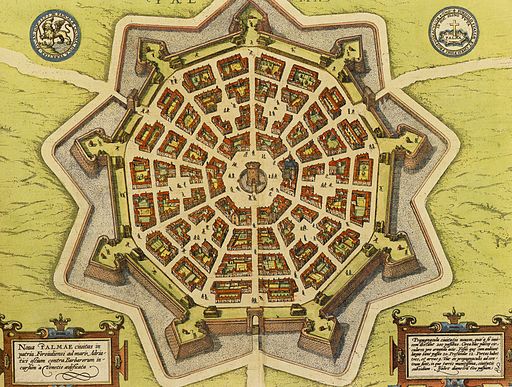GARS is attending great 17th century festival in Palmanova, Italy next month. The Savolax infantry regiment did not, obviously, fight in the Uskok war of the 1615-1618 which the Rievocazione Storica di Palmanova re-enacts: so in the event we portray generic Northern European mercenaries on the service of the Venetian Republic. But there actually exists strong ties between Gustavus Adolphus’s Sweden and Venice, and at least one person that forms a link between fortress town of Palmanova and Savolax infantrymen: Bengt Bengtsson Oxenstierna (1591-1643).
During Thirty Years War kingdom of Sweden and the republic of Venice were allied, Venice providing diplomatic and financial support to Sweden and Protestant Union. Venice of course was catholic in faith, but like very often during that time, the religion was secondary issue to power politics. Sweden and Venice shared the same enemy, Hapsburg empire, and thus were on the same side of the conflict.
In 1621 King Gustavus chose 30-year old nobleman Bengt Bengtsson Oxenstierna to travel as his ambassador to Venice. Bengt was born to one of the highest ranking families in the kingdom but the reason he was picked for the job was that he already knew the republic well. In fact Bengt was already a veteran traveler at that time.

Bengt Bengtsson Oxenstierna (1591-1643)
He had started his traveling hobby as a teenager studying in Rostock, first making trips to Germany and Poland, and then further south to Italy. He attempted visit to Holy Land already in 1613 but was forced to return to Tuscany because of a robbery. Few years later he made second, and this time successful trip to Orient, reaching Syria, Bagdad, Persia and Egypt.On his first trip to Italy (and the only part of his travels that we have his own written account of) Bengt Oxenstierna visited Palmanova in 1612. Here is his description of the fortress in his own words:
Ifrån Venedig och till Palma, huvudfästningen I Friul, äro 2 dagsresor, vilken fästning ligger uti ett slätt och eben land, och för den skull ser man henne långt bort, förty boluarderne och vallarne äro högt uppförda. Hon är alldeles regular och har 9 boluarder. Lorinus Florentinus har varit byggmästare därföre. Hon ligger ungefär 500 steg ifrån Österriks gebiet: två mil härifrån ligger det Österriks gränsfastning, som heter Gradisca; är tämlig fast.
Modern spelling by Sven Hedin. Same in english, translation by Konsta Nikkanen:
From Venice to Palma, main fortress in Friuli, was 2 days journey, where the fortress is situated in flat and plain land, so that she can be seen from far away, as the boulevards [bastions] and banks were built high. She is perfectly regular shape and has 9 boulevards. Lorinus Florentinus had been the construction master there. She is situated about 500 steps from Austria’s land: two miles from there is Austrian border fortress called Gradisca; which is quite sturdy.

Palmanovan kartta, 1500-1600 -luku
Later in his life Bengt Oxenstierna served as a governor of Augsburg in 1632-33: during that time several companies of Finnish infantry, first from Savolax and then from Viborg regiments (both under the Savolax colonel Kaspar Ermes) were stationed as garrison troops of Augsburg for short periods of time. So that’s our (only slightly forced) connection between Palmanova and our regiment!